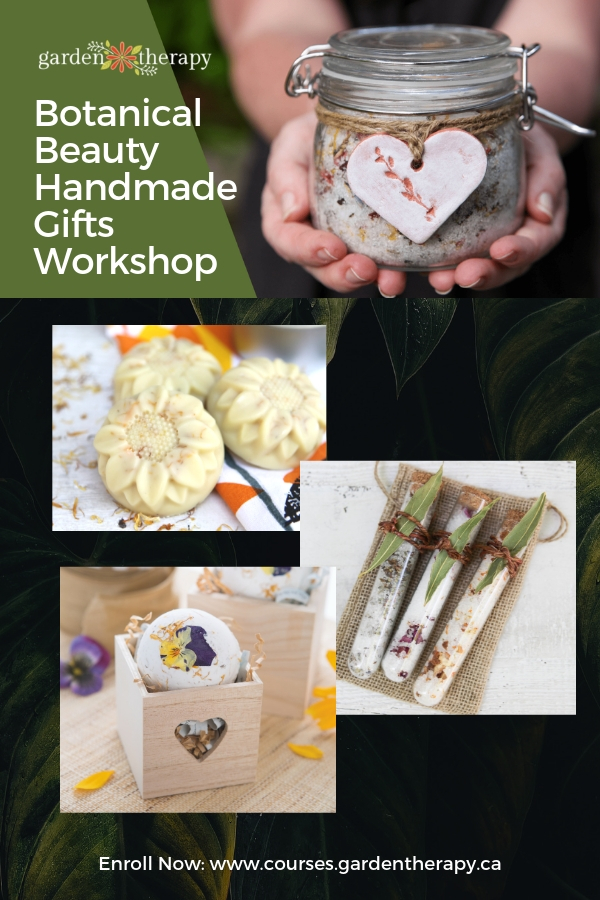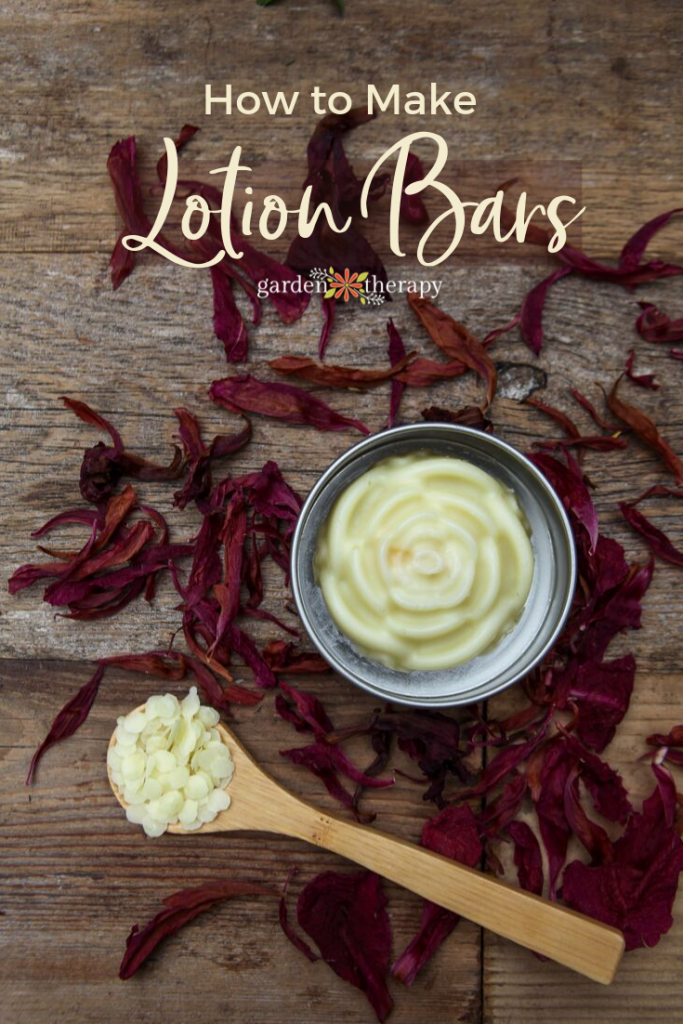Lotion bars are becoming more popular due to the elimination of packaging, common ingredients, and how they soften skin so deliciously. Even better? They couldn’t be simpler to make, and they look gorgeous too. Make your own with this customizable lotion bar recipe.
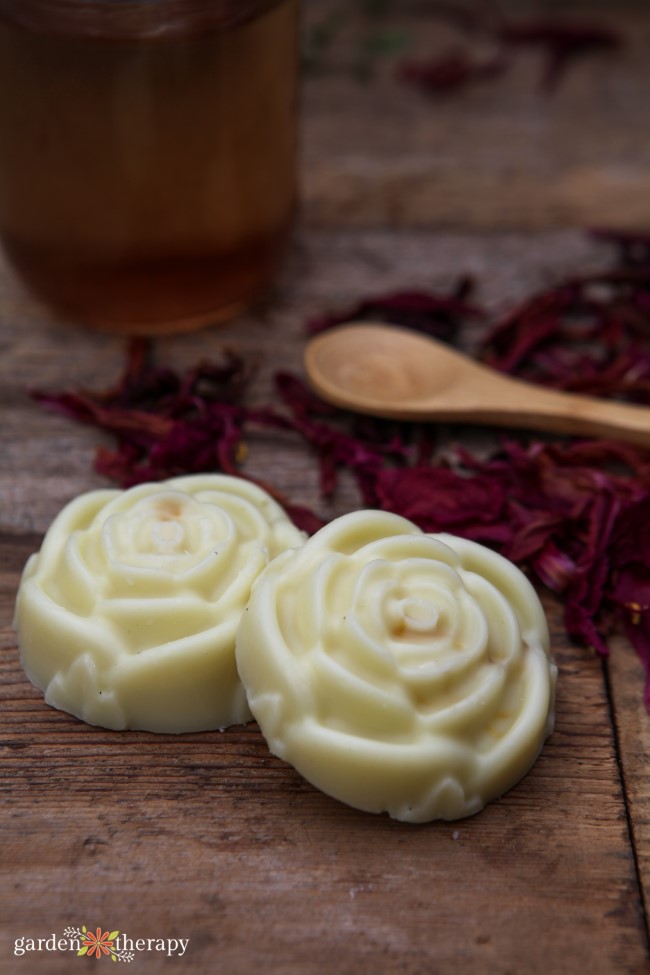
This post will cover…
How Do Lotion Bars Work?
Lotion bars are all the rage for so many reasons! They contain all the concentrated goodness in lotion without any added water to dilute the oils and kinds of butter.
Lotion made without water also means that lotion bars can be mixed together without any preservatives. A standard liquid lotion is much more complicated to make, as you need to make it in three phases (the aqueous phase, the oil phase, and the cool-down phase). This time commitment can easily become a barrier to some folks who want to make it at home.
In standard lotion, some of the ingredients are a little bit more complicated to find like an emulsifier, a thickener, and a preservative. There are options for these that are considered natural and ethical, but they do need to be sourced and the supply chain investigated to ensure that you’re finding ingredients that you feel good about.
That being said, there are certainly ways to do it! If you want to read more about what goes into making lotion, encourage you to visit my ultra- moisturizing lotion recipe.
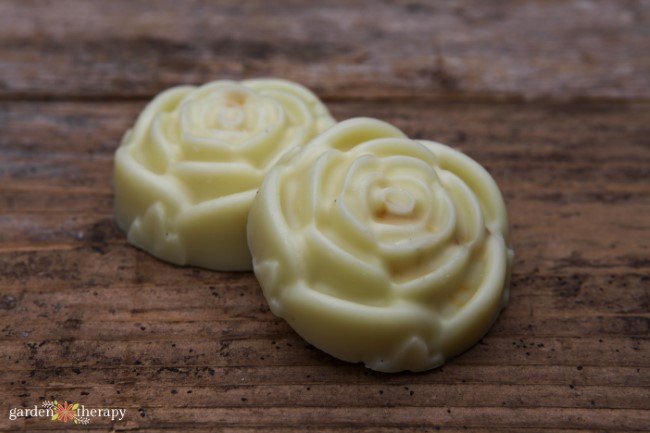

The Benefits of Lotion Bars
In contrast to the many steps it takes to make lotion and all the different ingredients, homemade lotion bars are very easy to make and require few ingredients.
They are also more concentrated so you’ll use less AND they also require less packaging. While I do use reusable glass bottles to dispense lotion, lotion bars don’t need any packaging at all if you’re using them at home.
I keep mine in a soap dish or a metal tin in my bathroom, similar to how you would store a bar of soap.
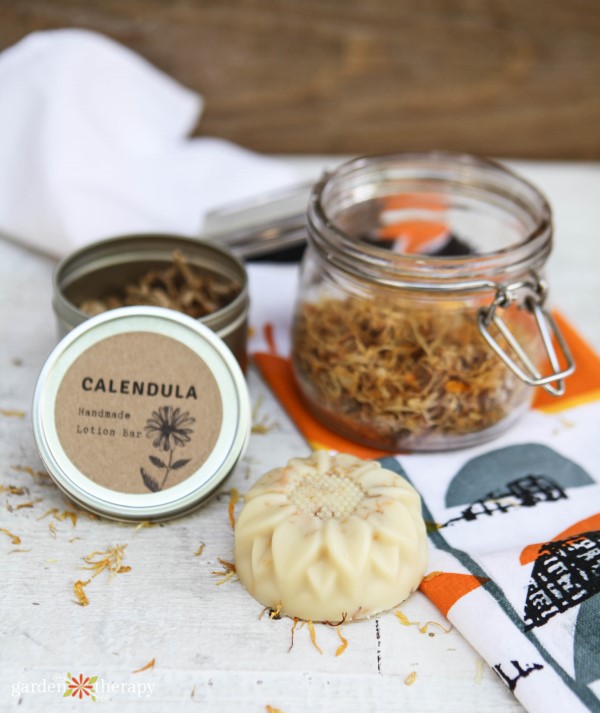

Lotion Bars as Gifts
This lotion bar recipe also makes a great gift. You can make up a bunch of these beauties in a flower silicone soap mould give them away as thoughtful homemade gifts throughout the year.
For ideas on how to package up and gift wrap homemade lotion bars and other botanical beauty creations, check out my Make & Give book, Home Apothecary. Want more? I have taken it one step further and brought that book to life in the Botanical Beauty Holiday Gifts Workshop.
Both are filled with a variety of recipes for making natural skin care products from gorgeous botanicals, natural colours, and essential oils. Plus each project comes with unique and creative ways to wrap them as gifts.
What Ingredients Go into a Lotion Bar?
DIY lotion bars are made of oils and butter that moisturize and repair skin. The oils and butter can be infused with herbs to gain additional properties to benefit the skin.
A harder substance like beeswax or soy wax is then added to firm up the oils into a solid bar. I personally love beeswax because it’s so good for the skin. It creates a protective layer on the skin and helps to attract water. In a lotion bar, it will also work as a natural exfoliant and get rid of any dead skin cells, all while hydrating.
The bars can be scented with essential oils, coloured with natural plant-based colourants, and decorated with botanicals like flower petals or coffee beans.
The ingredients are melted together in a double boiler to combine and then poured into a mould like a silicone cupcake or soap mould. When you apply the lotion bar to your skin you’re applying the pure ingredients and therefore you’ll need less.
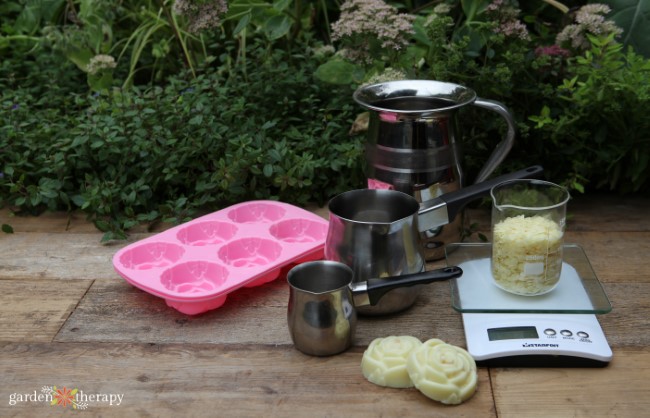

How Long Does a Lotion Bar Last?
A homemade lotion bar can last for many months. As there’s no water in the formulation it means that it is not a hospitable place for bacteria and fungus to grow.
Of course, how you use your lotion bar could allow for these elements to colonize. For example, if you’re often using it on wet skin or with wet hands, keeping it in a steamy bathroom, or storing it (eek) beside the toilet…it may not last as long as you’d like. Using common sense to keep your lotion bar clean, means it will continue to be safe to use for many months.
This makes lotion bars extremely sanitary for use. For those concerned about the sanitary risks of making your own lotion, lotion bars offer a good alternative. They’re made completely out of oils and waxes, with no water or preservatives required. They will last longer and stay nice and clean.
In terms of spoilage, the oils, while long-lasting, do have expiry dates. When making your lotion bar be sure to note the expiry dates on the ingredients. The expiry date for your lotion bar will be the soonest expiry date of all the ingredients. The lotion bar won’t last for many years, but it could certainly last well for quite a while.
If the lotion bar changes consistency, colour, or scent, discontinue use immediately and discard the lotion bar. Any change can be an indication that the lotion bar how spoiled. Again, common sense will guide you here.


How to Apply a Lotion Bar
To apply a lotion bar simply rub it on dry skin. You can rub the lotion bar between your hands to melt some of the oils and then apply them to your skin. Or you can rub this lotion bar directly on your skin.
A bar like this one with the coffee beans from my Home Apothecary book, the lotion bar is a bit firmer, and the coffee beans act as a massage to the skin.
The best oils and butters to use for a lotion bar recipe are ones that melt at body temperature. This will keep the bars firm in a normally climate-controlled space, and melt the oils and butters rapidly when rubbed in your hands.
Seasonal and indoor temperature also comes into play when using homemade lotion bars. I make a winter lotion bar that doesn’t have any beeswax in it that I keep in my cool bathroom in the winter months.
It stays firm in the winter and it melts rapidly in my hands so that I can apply it all over quickly after my showers. In the summer, that lotion bar is not solid enough to hold up to the warmer months, so I use a calendula summer lotion bar with beeswax added.
What Oils, Butters, and Waxes to Use in Lotion Bars
There are so many oils, butters, and waxes that can be used in lotion bars. But, I tend to stick with the most commonly available options.
There are certainly some exotic oils that can be added to skincare if needed, but often times, the simplest recipe is the most accessible and affordable, which fits into my life best.
Oils and Butters
Waxes
Face Lotion Bar Recipe Variation
I know how careful people are when it comes to putting certain oils on their faces. While all these oils are completely safe to use on your entire body, a few stand out as beneficial to the face. Try one of these oils for a face lotion bar recipe.
We all know coconut oil as an all-around skin superhero. It has plenty of vitamin E and fatty acids, which help to create a protective barrier on the skin. It’s also incredibly moisturizing and has antibacterial and antifungal properties that make it good for acne and other skin issues.
Jojoba soil is another common carrier oil used for the face because of its resemblance to sebum. Sebum is the natural oil our skin produces, and jojoba oil is chemically and structurally the closest to it.
It can replicate or dissolve oil when we overproduce or underproduce oil, helping to balance out sebum production. This also makes it a must-have for oily and acne-prone skin!
My other final fave is rosehip seed oil. It’s no secret here on Garden Therapy that I love incorporating rose into my skincare routine. It’s a powerful tool for anti-again, being packed full of vitamins and antioxidants. You can learn more about the power of roses and skincare here!
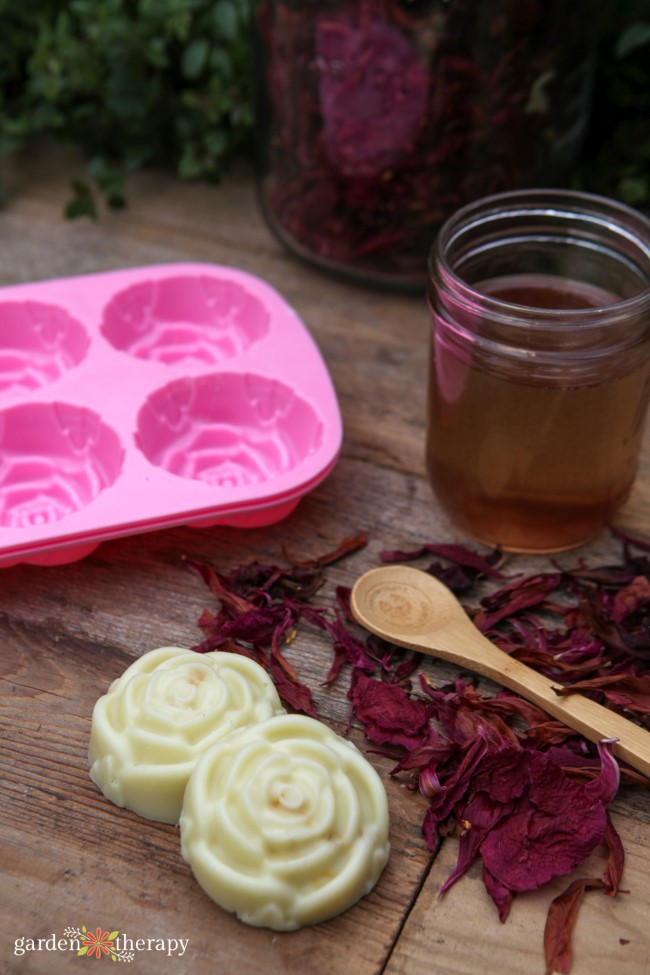

How to Make Lotion Bars
The key to making this lotion bar recipe is to heat the oils so that they are melted gently and not cooked. Overheating oil can burn the oil or change its properties.
As oils, butters, and waxes melt at different temperatures, here are a few tips on how to make lotion bars without modifying the properties of the ingredients.
Different kinds of liquid oils can be combined together in the melting pot. However, butters and waxes should be broken up into smaller pieces, grated, or purchased in pastilles or pellets to ensure that they melt more quickly.


If you are using a solid wax, melt the wax first in the double boiler, without any of the other ingredients. As it will melt at a higher temperature and take longer, which could affect the integrity of the oils.
Below I’ll outline the basic steps for making lotion bars. If you want a specific recipe, try my winter lotion bars or my calendula summer lotion bars.


Make it!
- Melt the wax over medium-low heat in a Turkish coffee pot, double boiler, or a small pot with a pour spout. Add the oils and butter when the wax is liquefied and melt all of the ingredients together.
- Stir constantly and keep a watchful eye on the oils. You want them to just reach the melting point and not overheat.
- When the oils have melted and combined, add the essential oil and flower petals, if using and stir well.
- Pour the ingredients into a silicone mould usually used for baking or soap-making, dividing the contents equally. Leave the lotion bars undisturbed until they are set.
- If you are making them in a warm room, move the silicone tray into the fridge to firm up.
- Remove from the mould and store them in the refrigerator when not in use.


FAQ About Lotion Bars
In order to make your DIY lotion bars less greasy, carefully choose which ingredients you want to use as your base.
Instead of shea butter or cocoa butter, try mango butter. Quick absorbing oils also work well, such as safflower, grapeseed, or fractionated coconut oil.
Lotion bars only need a couple of hours until they’re fully firm and ready to use. I recommend storing them in the fridge just to make sure they don’t melt when not in use.
Absolutely! This is great if they accidentally melt and lose their shape. Just keep in mind that the bar is still considered used and should not be re-gifted.
I hope you enjoy using these lotion bars. They are one of my favorite skincare DIYs and hopefully will become one of yours too.
More Moisturizing Recipes for Skin


